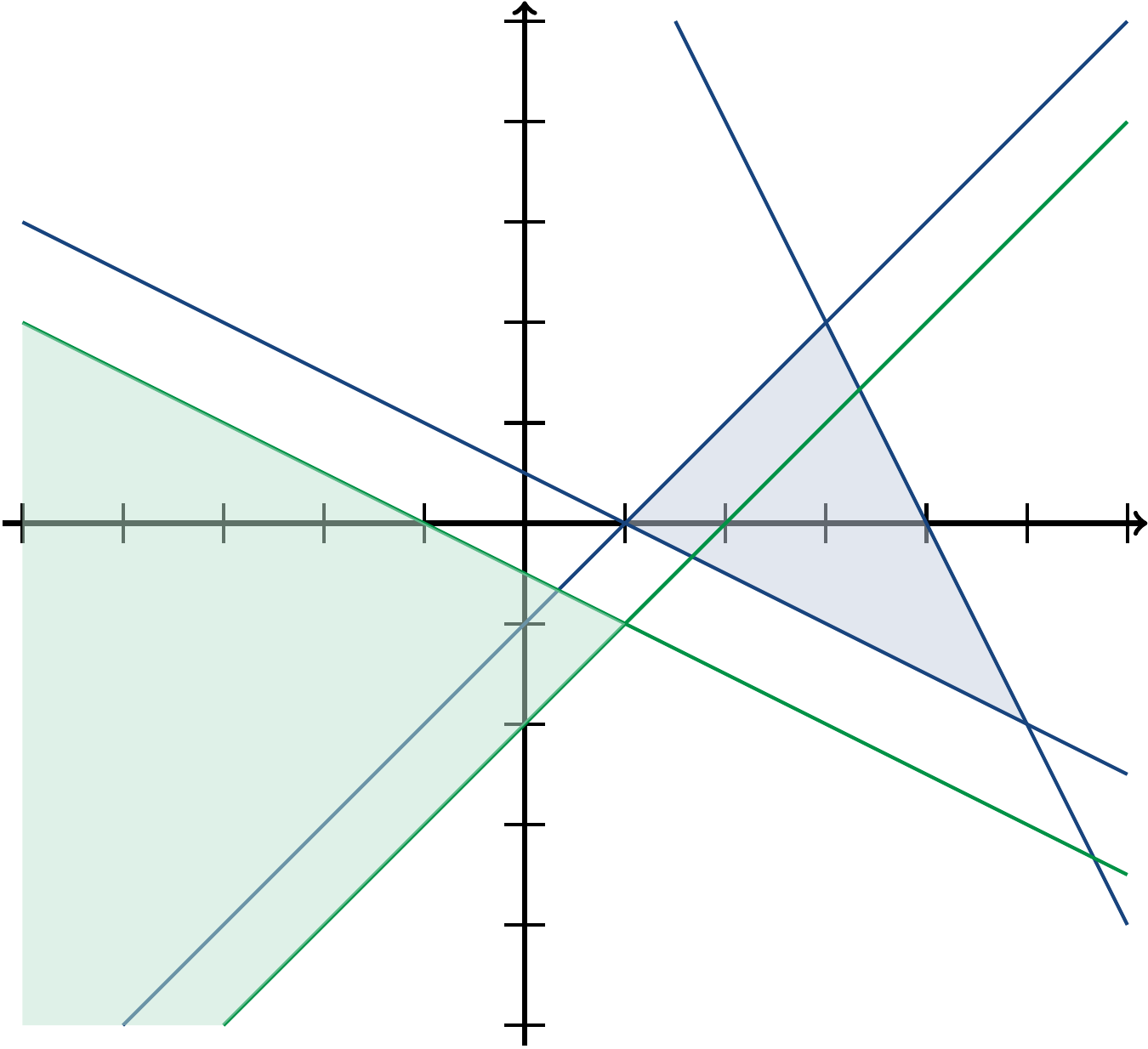\(%\usepackage{color}\)
\(%\usepackage{tcolorbox}\)
\(%\tcbuselibrary{skins}\)
\(\usepackage{pifont}\)
\(\)
\(\definecolor{fakeaaltobluel}{RGB}{00,141,229} % 0065BD\)
\(\definecolor{aaltoblue}{RGB}{00,101,189} % 0065BD\)
\(\definecolor{aaltored}{RGB}{237,41,57} % ED2939\)
\(\)
\(\definecolor{MyBoxBackground}{rgb}{0.98,0.98,1.0}\)
\(\definecolor{MyBoxBorder}{rgb}{0.90,0.90,1.0}\)
\(\definecolor{backgroundred}{rgb}{1.0,0.98,0.98}\)
\(\definecolor{shadowred}{rgb}{1.0,0.90,0.90}\)
\(\)
\(%\newcommand{\subheading}[1]{\textbf{\large\color{fakeaaltobluel}#1}}\)
\(\newcommand{\subheading}[1]{\large{\usebeamercolor[fg]{frametitle} #1}}\)
\(\)
\(\)
\(%\newtcbox{\mybox}[1][red]{on line,arc=0pt,outer arc=0pt,colback=#1!10!white,colframe=#1!50!black,boxsep=0pt,left=1pt,right=1pt,top=2pt,bottom=2pt,boxrule=0pt,bottomrule=1pt,toprule=1pt}\)
\(%\newtcbox{\mybox}[1][MyBoxBackground]{on line,arc=0pt,outer arc=0pt,colback=#1!10!white,colframe=#1!50!black,boxsep=0pt,left=1pt,right=1pt,top=2pt,bottom=2pt,boxrule=0pt,bottomrule=1pt,toprule=1pt}\)
\(\)
\(\newtcolorbox{MyBoxTitled}[1]{colback=MyBoxBackground!100!black,colframe=MyBoxBorder!100!black,boxsep=2pt,left=0pt,right=0pt,top=2pt,bottom=0pt,%enhanced,%\)
\( coltitle=red!25!black,title=#1,boxrule=1pt}\)
\(\)
\(\newtcolorbox{MyBox}[1][]{colback=MyBoxBackground!100!black,colframe=MyBoxBorder!100!black,boxsep=0pt,left=2pt,right=0pt,top=0pt,bottom=0pt,%enhanced,%\)
\( coltitle=red!25!black,boxrule=1pt,#1}\)
\(\)
\(\newenvironment{EqnBox}[1]{\begin{adjustbox}{valign=t}\begin{minipage}{#1}\begin{MyBox}[colback=backgroundred!100!black,colframe=shadowred!100!black]}{\end{MyBox}\end{minipage}\end{adjustbox}}\)
\(\)
\(\newenvironment{topbox}[1]{\begin{adjustbox}{valign=t}\begin{minipage}{#1}}{\end{minipage}\end{adjustbox}}\)
\(\)
\(\newcommand{\Blue}[1]{{\color{aaltoblue}#1}}\)
\(\newcommand{\Red}[1]{{\color{aaltored}#1}}\)
\(%\newcommand{\Emph}[1]{\emph{\color{aaltoblue}#1}}\)
\(\newcommand{\Emph}[1]{\emph{\usebeamercolor[fg]{structure} #1}}\)
\(\newcommand{\TextDef}[1]{{\bf\usebeamercolor[fg]{structure} #1}}\)
\(\)
\(\newcommand{\todo}[1]{\textbf{\Red{\Pointer #1}}}\)
\(\newcommand{\TODO}[1]{\todo{#1}}\)
\(\)
\(\newcommand{\Pointer}{\raisebox{-1ex}{\huge\ding{43}}\ }\)
\(\)
\(\)
\(%\)
\(% Common math definitions\)
\(%\)
\(\newcommand{\Set}[1]{\{#1\}}\)
\(\newcommand{\Setdef}[2]{\{{#1}\mid{#2}\}}\)
\(\newcommand{\PSet}[1]{\mathcal{P}(#1)}\)
\(\newcommand{\Pair}[2]{(#1,#2)}\)
\(\newcommand{\Card}[1]{{\vert{#1}\vert}}\)
\(\newcommand{\Tuple}[1]{(#1)}\)
\(\newcommand{\Seq}[1]{[#1]}\)
\(\newcommand{\bbZ}{\mathbb{Z}}\)
\(\newcommand{\Ints}{\mathbb{Z}}\)
\(\newcommand{\Reals}{\mathbb{R}}\)
\(\newcommand{\bbQ}{\mathbb{Q}}\)
\(\newcommand{\Rats}{\bbQ}\)
\(\newcommand{\bbN}{\mathbb{N}}\)
\(\newcommand{\Nats}{\bbN}\)
\(\)
\(\newcommand{\Floor}[1]{\lfloor #1 \rfloor}\)
\(\newcommand{\Ceil}[1]{\lceil #1 \rceil}\)
\(\)
\(\newcommand{\False}{\textsf{F}}\)
\(\newcommand{\True}{\textsf{T}}\)
\(\)
\(\newcommand{\Implies}{\rightarrow}\)
\(\newcommand{\Iff}{\leftrightarrow}\)
\(%\newcommand{\Implies}{\Rightarrow}\)
\(%\newcommand{\Iff}{\Leftrightarrow}\)
\(\newcommand{\Xor}{\oplus}\)
\(\)
\(\newcommand{\Equiv}{\equiv}\)
\(\)
\(\newcommand{\Oh}[1]{O(#1)}\)
\(%\newcommand{\Theta}[1]{\Theta(#1)}\)
\(\)
\(\newcommand{\PHP}[2]{\mathrm{php}_{#1,#2}}\)
\(\newcommand{\PH}[2]{\mathit{x}_{#1,#2}}\)
\(\)
\(\newcommand{\NP}{\textbf{NP}}\)
\(\newcommand{\coNP}{\textbf{co-NP}}\)
\(\)
\(\newcommand{\bnfdef}{\mathrel{\textup{::=}}}\)
\(\newcommand{\bnfor}{\mathrel{\mid}}\)
\(\)
\(\newcommand{\Def}{\mathrel{:=}}\)
\(\)
\(\newcommand{\LSF}{\alpha}\)
\(\newcommand{\RSF}{\beta}\)
\(\newcommand{\SF}{\phi}\)
\(\newcommand{\MF}{\gamma}\)
\(%\newcommand{\Abbrv}{\equiv}\)
\(\newcommand{\Abbrv}{\Def}\)
\(\newcommand{\AbbrvEq}{\equiv}\)
\(\newcommand{\Exists}[2]{\exists{#1}.\,#2}\)
\(%\newcommand{\E}[3]{\exists{#1{:}#2}.\,#3}\)
\(\newcommand{\E}[3]{\exists{#1{:}\,#3}}\)
\(\newcommand{\Forall}[2]{\forall{#1}.\,#2}\)
\(%\newcommand{\Furall}[3]{\forall{#1{:}#2}.\,#3}\)
\(%\newcommand{\A}[3]{\forall{#1{:}#2}.\,#3}\)
\(\newcommand{\A}[3]{\forall{#1{:}\,#3}}\)
\(\newcommand{\Models}{\models}\)
\(\newcommand{\NotModels}{\not\models}\)
\(\)
\(\newcommand{\Substf}[3]{#1[#2 \mapsto #3]}\)
\(\newcommand{\Functions}[2]{[#1 \to #2]}\)
\(\)
\(\)
\(\newcommand{\Eq}{\approx}\)
\(\newcommand{\EqS}[1]{\approx_{#1}}\)
\(\newcommand{\Neq}{\not\approx}\)
\(\)
\(%\newcommand{\Th}{\mathcal{T}}\)
\(\newcommand{\Th}{T}\)
\(\newcommand{\ThI}[1]{\Th_{#1}}\)
\(\)
\(\newcommand{\Sig}{\Sigma}\)
\(\newcommand{\SigI}[1]{\Sigma_{#1}}\)
\(\newcommand{\Interp}{I}\)
\(%\newcommand{\Interp}{{\mathcal{I}}}\)
\(\newcommand{\InterpOf}[1]{#1^\Interp}\)
\(\newcommand{\InterpIOf}[2]{#2^{#1}}\)
\(\newcommand{\InterpRestr}[1]{\Interp^{#1}}\)
\(\newcommand{\InterpI}[1]{I_{#1}}\)
\(%\newcommand{\InterpI}[1]{{\mathcal{I}_{#1}}}\)
\(%\newcommand{\InterpIOf}[2]{#2^{\InterpI{#1}}}\)
\(\newcommand{\InterpDom}{D_{\Interp}}\)
\(\newcommand{\InterpSubst}[2]{\Interp[{#1}\mapsto{#2}]}\)
\(\newcommand{\ThModels}{\mathrel{\models_{\Th}}}\)
\(\newcommand{\ThIModels}[1]{\mathrel{\models_{\ThI{#1}}}}\)
\(\)
\(% Example interpretations\)
\(\newcommand{\IInts}{\InterpI{\textrm{ints}}}\)
\(\newcommand{\IIntsOf}[1]{\InterpIOf{\IInts}{#1}}\)
\(\newcommand{\IMods}{\InterpI{\textrm{mod7}}}\)
\(\newcommand{\IModsOf}[1]{\InterpIOf{\IMods}{#1}}\)
\(\newcommand{\ISilly}{\InterpI{\textrm{silly}}}\)
\(\newcommand{\ISillyOf}[1]{\InterpIOf{\ISilly}{#1}}\)
\(\)
\(\)
\(%\newcommand{\El}[1]{\textup{e}_{#1}}\)
\(\)
\(\newcommand{\ElemI}{\textup{\ding{40}}}\)
\(\newcommand{\ElemII}{\textup{\ding{41}}}\)
\(\newcommand{\ElemIII}{\textup{\ding{46}}}\)
\(\)
\(\newcommand{\ElemA}{\circ}\)
\(\newcommand{\ElemB}{\bullet}\)
\(\)
\(\newcommand{\AxiomMarg}[1]{\makebox{}\hfill(\Blue{#1})}\)
\(\newcommand{\Comment}[1]{\makebox{}\hfill\Blue{#1}}\)
\(\)
\(\newcommand{\DLZ}{\mathit{DL}(\bbZ)}\)
\(\newcommand{\DLQ}{\mathit{DL}(\bbQ)}\)
\(\newcommand{\EUF}{\mathit{EUF}}\)
\(\newcommand{\TEUF}{\ThI{\mathit{EUF}}}\)
\(\newcommand{\LIA}{\mathit{LIA}}\)
\(\newcommand{\TLIA}{\ThI{\mathit{LIA}}}\)
\(\newcommand{\TNRA}{\ThI{\mathit{NRA}}}\)
\(\newcommand{\TNIA}{\ThI{\mathit{NIA}}}\)
\(\newcommand{\LRA}{\mathit{LRA}}\)
\(\newcommand{\TLRA}{\ThI{\mathit{LRA}}}\)
\(\newcommand{\IDL}{\mathit{IDL}}\)
\(\newcommand{\RDL}{\mathit{RDL}}\)
\(\newcommand{\EUFModels}{\mathrel{\models_{\TEUF}}}\)
\(\newcommand{\EUFModelsNot}{\mathrel{{\not\models}_{\TEUF}}}\)
\(\newcommand{\LIAModels}{\mathrel{\models_{\LIA}}}\)
\(\newcommand{\LIANotModels}{\mathrel{\not\models_{\LIA}}}\)
\(\newcommand{\LIAEntails}{\mathrel{\models_{\LIA}}}\)
\(\newcommand{\IDLEntails}{\mathrel{\models_{\IDL}}}\)
\(\newcommand{\NIAModels}{\mathrel{\models_{\TNIA}}}\)
\(\newcommand{\Div}[2]{{{#1}\mid{#2}}}\)
\(\)
\(\newcommand{\Sort}{s}\)
\(\newcommand{\SortI}[1]{s_{#1}}\)
\(\newcommand{\Sorts}{S}\)
\(\newcommand{\Func}{f}\)
\(\newcommand{\Funcs}{F}\)
\(\newcommand{\Pred}{p}\)
\(\newcommand{\Preds}{P}\)
\(\newcommand{\SortName}[1]{\textsf{#1}}\)
\(\)
\(\newcommand{\Var}{x}\)
\(\newcommand{\Vars}{X}\)
\(\newcommand{\BVar}{a}\)
\(\newcommand{\BVars}{\mathcal{B}}\)
\(\newcommand{\Val}{v}\)
\(\)
\(\newcommand{\DomOf}[1]{D_{#1}}\)
\(\)
\(\newcommand{\Term}{t}\)
\(\newcommand{\TermI}[1]{t_{#1}}\)
\(\newcommand{\TermP}[1]{t'}\)
\(\newcommand{\Atom}{A}\)
\(\)
\(\)
\(%\)
\(% EUF\)
\(%\)
\(\newcommand{\UFEq}{\equiv}\)
\(\newcommand{\UFEqP}{\mathrel{\equiv'}}\)
\(\newcommand{\UFEqNot}{\not\equiv}\)
\(\newcommand{\UFNeq}{\not\equiv}\)
\(\)
\(\)
\(\)
\(%\)
\(% Arithmetics\)
\(%\)
\(\newcommand{\IntsSort}{\textrm{Int}}\)
\(\newcommand{\IntsSig}{\SigI{\textrm{Int}}}\)
\(\newcommand{\RealsSort}{\textrm{Real}}\)
\(\newcommand{\Mul}{\mathbin{*}}\)
\(\)
\(%\)
\(% Arrays\)
\(%\)
\(\newcommand{\IndexSort}{\SortName{idx}}\)
\(%\newcommand{\IndexSort}{\SortName{index}}\)
\(\newcommand{\ElemSort}{\SortName{elem}}\)
\(%\newcommand{\ArraySort}{\SortName{array}}\)
\(\newcommand{\ArraySort}{\SortName{arr}}\)
\(\newcommand{\ArrSig}{\Sigma_{\mathit{arrays}}}\)
\(\newcommand{\ArrE}[1]{\textrm{a}_{#1}}\)
\(\)
\(\)
\(\newcommand{\TArrays}{\ThI{\mathit{arrays}}}\)
\(\newcommand{\TArraysExt}{\ThI{\mathit{arrays}}^{=}}\)
\(\newcommand{\ArrModels}{\mathrel{{\models_\mathit{arrays}}}}\)
\(\)
\(\)
\(%\)
\(% Theories of Lisp-like lists\)
\(%\)
\(\newcommand{\ThCons}{\ThI{\textrm{cons}}}\)
\(\newcommand{\ThConsAcyclic}{\ThI{\textrm{cons+}}}\)
\(\newcommand{\SigCons}{\SigI{\textrm{cons}}}\)
\(\newcommand{\Cons}{\FuncName{cons}}\)
\(\newcommand{\Car}{\FuncName{car}}\)
\(\newcommand{\Cdr}{\FuncName{cdr}}\)
\(\newcommand{\LAtom}{\PredName{atom}}\)
\(% Sorted version additions\)
\(\newcommand{\ListSort}{\SortName{list}}\)
\(\newcommand{\Nil}{\FuncName{nil}}\)
\(\newcommand{\Length}{\FuncName{length}}\)
\(\)
\(\)
\(\newcommand{\BVT}{\ThI{\mathsf{BV}}}\)
\(\newcommand{\BVSig}{\SigI{\mathsf{BV}}}\)
\(\newcommand{\BVS}[1]{\SortName{[}#1\SortName{]}}\)
\(%\newcommand{\BVS}[1]{[{#1}]}\)
\(\newcommand{\BVAdd}[1]{\mathbin{{+}_{\BVS{#1}}}}\)
\(\newcommand{\BVLE}[1]{\mathbin{{\le}_{\BVS{#1}}}}\)
\(\newcommand{\BVGE}[1]{\mathbin{{\ge}_{\BVS{#1}}}}\)
\(\newcommand{\BVSL}[1]{\mathbin{{\ll}_{\BVS{#1}}}}\)
\(\newcommand{\BVTermB}[1]{\hat{t}_{(#1)}}\)
\(%\newcommand{\BVTermBI}[2]{\hat{t}_{#1}^{(#2)}}\)
\(\newcommand{\BVAtom}{\hat{A}}\)
\(\newcommand{\BVXB}[1]{\hat{x}_{(#1)}}\)
\(\newcommand{\BVYB}[1]{\hat{y}_{(#1)}}\)
\(\newcommand{\BVVar}[1]{\hat{x}_{(#1)}}\)
\(\)
\(\)
\(% SMTLIB logics\)
\(\newcommand{\SMTLIBLogic}[1]{\textrm{#1}}\)
\(\newcommand{\QFUF}{\SMTLIBLogic{QF\_UF}}\)
\(\newcommand{\QFLIA}{\SMTLIBLogic{QF\_LIA}}\)
\(\newcommand{\QFUFLRA}{\SMTLIBLogic{QF\_UFLRA}}\)
\(\newcommand{\SMTLIBLIA}{\SMTLIBLogic{LIA}}\)
\(\)
\(\newcommand{\CG}[1]{G_{#1}}\)
\(\newcommand{\DiffEdge}[1]{\overset{#1}{\longrightarrow}}\)
\(\)
\(\newcommand{\FuncName}[1]{\textsf{#1}}\)
\(\newcommand{\PredName}[1]{\textsf{#1}}\)
\(\newcommand{\ReadF}{\FuncName{read}}\)
\(\newcommand{\Read}[2]{\ReadF(#1,#2)}\)
\(\newcommand{\WriteF}{\FuncName{write}}\)
\(\newcommand{\Write}[3]{\WriteF(#1,#2,#3)}\)
\(\)
\(\newcommand{\Abs}[1]{\alpha_{#1}}\)
\(\)
\(\newcommand{\Expl}[1]{\textit{explain}(#1)}\)
\(\)
\(\newcommand{\SMTAssertF}{\textsf{assert}}\)
\(\newcommand{\SMTAssert}[1]{\SMTAssertF(#1)}\)
\(\)
\(\newcommand{\UFRoot}{\textit{parent}}\)
\(\newcommand{\UFRootOf}[1]{{#1}.\UFRoot}\)
\(\newcommand{\UFRank}{\textit{rank}}\)
\(\newcommand{\UFRankOf}[1]{{#1}.\UFRank}\)
\(\newcommand{\UFFind}[1]{\textsf{find}(#1)}\)
\(\newcommand{\UFMerge}[2]{\textsf{merge}(#1,#2)}\)
\(\)
\(\newcommand{\CCPending}{\textit{pending}}\)
\(\)
\(\)
\(%\)
\(% Theory solver interface\)
\(%\)
\(\newcommand{\TSinit}[1]{\mathop{init}(#1)}\)
\(\newcommand{\TSassert}[1]{\mathop{assert}(#1)}\)
\(\newcommand{\TSretract}{\mathop{retract}()}\)
\(\newcommand{\TSisSat}{\mathop{isSat}()}\)
\(\newcommand{\TSgetModel}{\mathop{getModel}()}\)
\(\newcommand{\TSgetImplied}{\mathop{getImplied}()}\)
\(\newcommand{\TSexplain}[1]{\mathop{explain}(#1)}\)
\(\)
\(\)
\(\newcommand{\VarsOf}[1]{\mathop{vars}(#1)}\)
\(\)
\(\newcommand{\Dist}[1]{\mathit{dist}(#1)}\)
\(%\newcommand{\Dist}[1]{\mathit{dist}(#1)}\)
\(\)
\(%\)
\(% Nelson-Oppen\)
\(%\)
\(\newcommand{\TComb}{\cup}\)
\(\newcommand{\NOShared}[1]{\mathop{\textrm{shared}}(#1)}\)
\(\newcommand{\NOPart}{P}\)
\(\newcommand{\NOPartI}[1]{P_{#1}}\)
\(%\newcommand{\NOEq}{\mathrel{\approx}}\)
\(%\newcommand{\NOEqNot}{\mathrel{\not\approx}}\)
\(\newcommand{\NOEq}{\mathrel{{\equiv_{P}}}}\)
\(%\newcommand{\NOEq}{\stackrel{\NOPart}{\equiv}}\)
\(\newcommand{\NOEqNot}{\mathrel{\not\equiv_{\NOPart}}}\)
\(%\newcommand{\NOEqNot}{\stackrel{\NOPart}{\not\equiv}}\)
\(\newcommand{\NOArr}{\mathop{arr}(P)}\)
\(\newcommand{\NOArrI}[1]{\mathop{arr}(P_{#1})}\)
\(\)
\(%\)
\(% Example formulas in Nelson-Oppen part\)
\(%\)
\(\newcommand{\NOF}{\phi}\)
\(%\newcommand{\NOFA}{\phi_1}\)
\(%\newcommand{\NOFB}{\phi_2}\)
\(%\newcommand{\NOTA}{\ThI{1}}\)
\(%\newcommand{\NOTB}{\ThI{2}}\)
\(\newcommand{\NOFEUF}{\phi_\mathit{EUF}}\)
\(\newcommand{\NOFLIA}{\phi_\mathit{LIA}}\)
\(\newcommand{\NOFLRA}{\phi_\mathit{LRA}}\)
\(\newcommand{\NOFCons}{\phi_\textup{cons}}\)
\(\)
\(%\newcommand{\Asgn}{\mathrel{:=}}\)
\(\newcommand{\Asgn}{\mathrel{\leftarrow}}\)
\(\)
\(%\newcommand{\Engl}[1]{(engl.\ #1)}\)
\(\)
\(\newcommand{\Ack}[1]{\mathop{ack}(#1)}\)
\(\newcommand{\VVar}[1]{v_{#1}}\)
\(\newcommand{\FVar}[2]{{#1}_{#2}}\)
\(\newcommand{\PVar}[2]{{#1}_{#2}}\)
\(\newcommand{\Flat}{{\phi_\textrm{flat}}}\)
\(\newcommand{\Cong}{{\phi_\textrm{cong}}}\)
\(\)
\(\newcommand{\In}{\mathit{in}}\)
\(\newcommand{\Out}{\mathit{out}}\)
\(\)
\(\newcommand{\SubType}{\FuncName{subtype}}\)
\(\)
\(%\)
\(% Fourier-Motzkin elimination\)
\(%\)
\(\newcommand{\FM}{\phi}\)
\(\newcommand{\FMup}{\phi^\textrm{up}}\)
\(\newcommand{\FMlo}{\phi^\textrm{low}}\)
\(%\newcommand{\FMup}{\phi^{\le}}\)
\(%\newcommand{\FMlo}{\phi^{\ge}}\)
\(\newcommand{\FMindep}{\phi^{\ast}}\)
\(\newcommand{\Nup}{n^\textrm{up}}\)
\(\newcommand{\Nlo}{n^\textrm{low}}\)
\(%\newcommand{\Nup}{n^{\le}}\)
\(%\newcommand{\Nlo}{n^{\ge}}\)
\(\newcommand{\Rup}[1]{A^\textrm{up}_{#1}}\)
\(\newcommand{\Rlo}[1]{A^\textrm{low}_{#1}}\)
\(%\newcommand{\Rup}[1]{A^{\le}_{#1}}\)
\(%\newcommand{\Rlo}[1]{A^{\ge}_{#1}}\)
\(%\newcommand{\FMless}{\mathrel{\triangleleft}}\)
\(%\newcommand{\FMmore}{\mathrel{\triangleright}}\)
\(\)
\(\)
\(\)
\(\newcommand{\ProblemName}[1]{\textup{#1}}\)
\(\newcommand{\ATM}{A_\textup{TM}}\)
\(\newcommand{\PCP}{\ProblemName{PCP}}\)
\(\newcommand{\MPCP}{\ProblemName{MPCP}}\)
\(\newcommand{\PCPAst}{\star}\)
\(\)
\(\newcommand{\Eps}{\varepsilon}\)
\(\)
\(\newcommand{\List}[1]{[#1]}\)
\(\newcommand{\Strings}[1]{\{#1\}^\star}\)
\(\newcommand{\StringsOver}[1]{{#1}^\star}\)
\(\newcommand{\SigmaStrings}{\Sigma^\star}\)
\(\newcommand{\GammaStrings}{\Gamma^\star}\)
\(\newcommand{\Complement}[1]{\overline{#1}}\)
\(\)
\(\)
\(%\)
\(% SSA example\)
\(%\)
\(\newcommand{\In}{\mathit{in}}\)
\(\newcommand{\Out}{\mathit{out}}\)
\(\)
\(%\)
\(%\)
\(%\)
\(\newcommand{\DA}{♠}\)
\(\newcommand{\DB}{♥}\)
\(\newcommand{\DC}{♦}\)
\(\newcommand{\DD}{♣}\)
